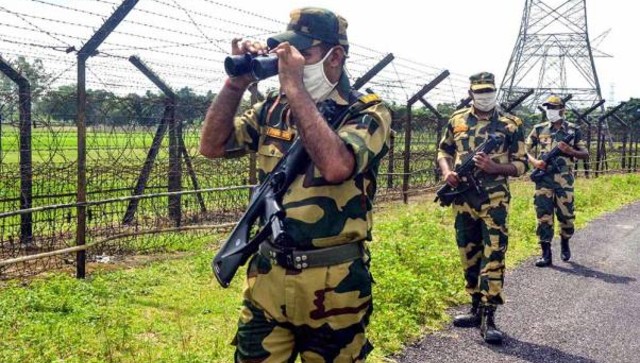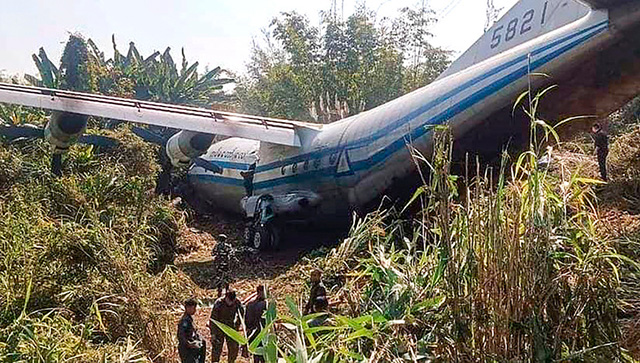National security in the context of the North East cannot confine itself to only containing the myriad insurgencies that dot its variegated landscape. It must take into account the strategic encirclement that the region is heir to. Surrounded by China, Myanmar, Bangladesh, Bhutan and Nepal (the erstwhile Himalayan kingdom is placed a little afield, near the Siliguri corridor), 88 per cent of the North East’s boundaries are international, with only 12 per cent connecting it to mainland India. The borders in the North East must, therefore, lend themselves to robust management. Unfortunately, this has not been the case, and the porosity of the borders has been a source of considerable concern for the region, subverting thereby the national security of India, of which the North East is an inalienable part.
Whereas drugs, arms and insurgents enter the North East via the land border from across Myanmar, the border with Bangladesh — in addition to the above three aspects — also provides the route for the illegal ingress of migrants into India. The demographic invasion has critically altered the population patterns of Tripura and Assam in a manner that cannot be corrected.
Despite the fact that the infamous IMDT Act was scrapped by the Supreme Court of India, there is little or no let-up in the influx into Assam and other parts of the North East from erstwhile East Pakistan. Even the process of updating the NRC in Assam that had begun in right earnest has run into rough weather with various grouping demanding a renewal of the process.
The present Government in Assam is now trying to bring about a consensus among various groups of the state on the issue of the NRC and could in all probability revisit the process with new coordinates. There has been much heart-burning in the manner in which certain bonafide citizens have been left out of the NRC. The NRC exercise, therefore, continues to simmer.
General elections to the Indian Parliament are just over one year away and there is a cry that the electoral rolls should be decisively concluded before the hustings in 2024. While it is immediately not known how the dispensation is viewing the serious matter, the general feeling is that there are names in both the NRC and the electoral rolls in Assam that have names of voters who are clearly of Bangladeshi origin without having adopted Indian citizenship by way of due process. It would be recalled that the riots in Barpeta of 2010 that had led to the stoppage of the NRC updating were instigated by nefarious elements that did not want an immaculate NRC.
At the time, cadres of the All Assam Minority Students’ Union (AMSU) had gheraoed the Barpeta Deputy Commissioner’s office in order to oppose the process of updating the NRC—the AMSU’s constituency did not want a roll call that would identify the illegal Bangladeshi population in the district and thereabouts. Sad but true, but it is this population which will decide the future of Assam and India. It is a distressing chapter in India’s history that a problem that has been loud-hailed for so long and for which a five-year-long agitation was waged continues to fester, and more often than not with active support from vested interests, including those who are charged with the duty of safeguarding India’s national security.
Indeed, the first warning about the danger came during the colonial period when Bengali Muslim migrants from East Bengal began to settle in four districts of Assam “clearing forests, cultivating waste lands and multiplying.” A British Census Commissioner, C.S. Mullan in 1931 had foretold, “without fuss, without tumult, without undue trouble to the district revenue staff, a population which amounts to about half a million has transplanted itself from Bengal into the Assam valley during the last twenty five years…it is sad but by no means improbable that in another thirty years Sibsagar district will be the only part of Assam in which an Assamese will find himself at home.”
A former governor of Assam, Lt Gen (Retd) SK Sinha, in a report to the president of India on the illegal migration into Assam, had written, “This silent and invidious demographic invasion of Assam may result in the loss of the geo-strategically vital districts of lower Assam. The influx of illegal migrants is turning these districts into a Muslim majority region. It will then only be a matter of time when a demand for their merger with Bangladesh may be made. The rapid growth of international Islamic fundamentalism may provide the driving force for this demand.”
Time would have to bidden to discern whether the prophecies of the two above mentioned senior functionaries will see the light of truth, but what is already evident is the fact that alongside the illegal migration (which has transformed six districts of Assam into Muslim majority) there is a full-bodied ingress of Islamist militants from Bangladesh. With the relative heat that groups such HUJI (B) and Ansarullah Bangla Team are facing in the erstwhile East Pakistan, many cadres of such groups are using the demographic jungles of lower Assam both as a safe haven and as a pull-back area after operations (alongside Pakistani terrorist groups like LeT and JeM) in mainland India.
But notwithstanding the constants that beleaguer the region by way of the presence of millions of illegal Bangladeshi migrants, a majority of whose affinity continues to be informed from across the border, it is important to take stock of an important measure that was undertaken to put a stop to the infiltration. The government of India had decided to fence the boundary between Bangladesh and the North East.
To that end, a sanction was accorded to fence a stretch of 571.163 km that made up the international boundary in the Assam-Meghalaya sector. But despite the undue long passage of time, only about 350 Km has been completed. It is a well-known fact that both illegal migrants and insurgents enter the North East via West Garo Hills in Meghalaya, traversing the hilly and forested region that borders the Assam-Meghalaya border in the area to enter Assam’s Goalpara district.
While the district of Goalpara is now a Muslim-majority district as a result of the illegal migration, Islamists use the district as a launching pad to enter Assam. The apprehensions of cadres of the Ansarullah Bangla Team in Barpeta and other districts are a direct result of the mass ingress that has been undertaken by the Bangladesh group in recent times.
It is, therefore, high time that New Delhi took stock of the border management aspects in the frontiers. The porosity of the border has cost the region dear. If New Delhi feels that it would only be Assam and its neighbouring states that would be imperilled as a result of the illegal ingress then it must think again. Drugs, arms and the illegal human population are slowly making their way into the Indian heartland and into places such as the national capital. Robust management with a clear perspective planning exercise must, therefore, be put in place without delay to stem the menace.
The writer is a conflict theorist and author. Vews expressed in persoonal.
Read all the Latest News , Trending News , Cricket News , Bollywood News , India News and Entertainment News here. Follow us on Facebook , Twitter and Instagram .
)
)
)
)
)